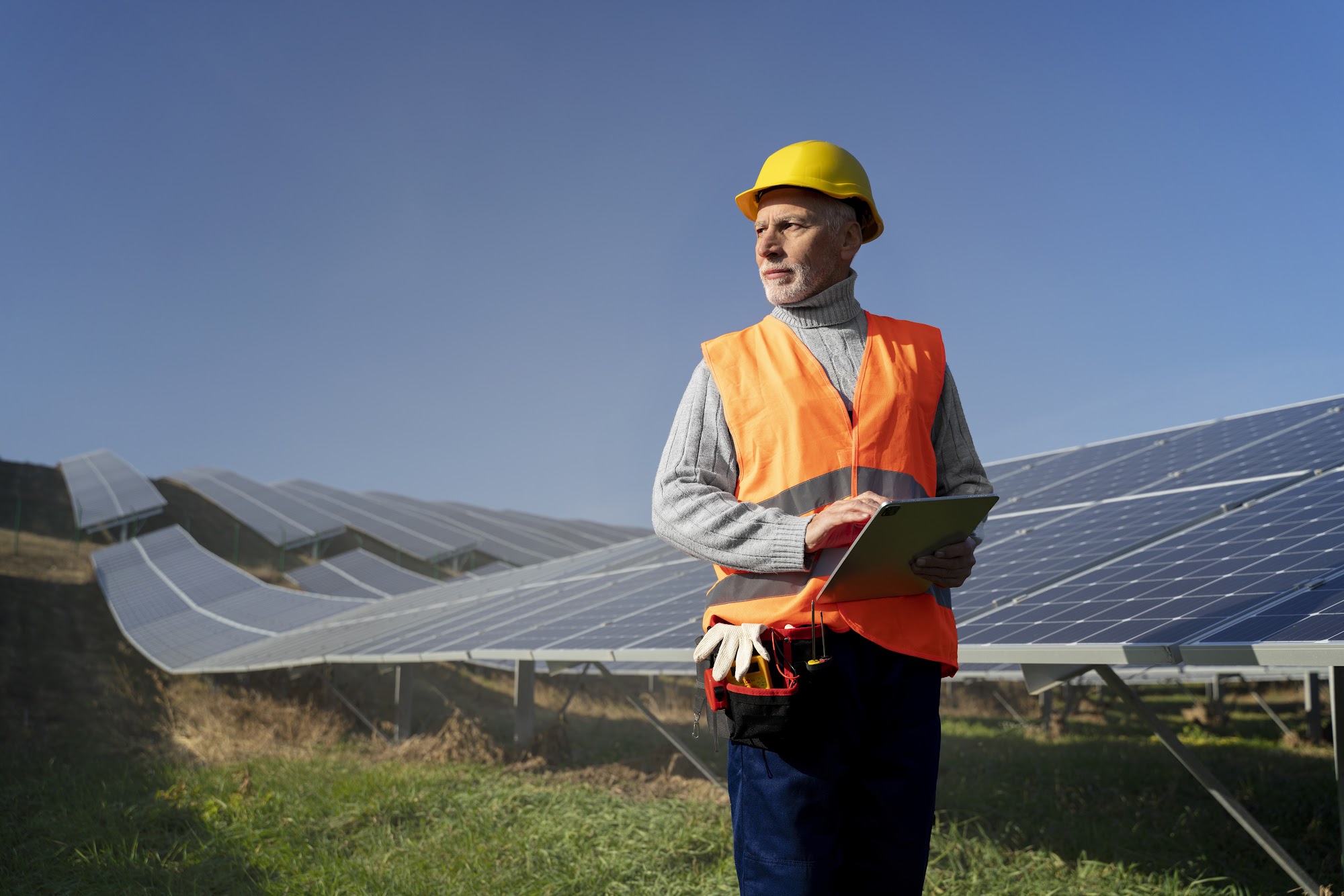The energy transition, with its ambitious goal of achieving net-zero emissions, places the power grid at its epicenter. The grid is not just a network of cables and transformers; it's the backbone of revolutionary green initiatives. The new grid will be fundamental for transporting clean energy, accelerating the electric vehicle (EV) revolution, enabling green hydrogen production, enhancing energy storage, and harnessing distributed energy resources (DERs). However, the transition to a greener future is not without its challenges, the most important one as of now is the integration of a large-scale renewable energy generation into the existing grid infrastructure
Despite the crucial role the grid plays in the energy transition, integrating a rapidly growing volume of renewable energy sources and the need to have a reliable and resilient T&D infrastructure poses significant challenges:
Grid Connectivity / Integration: Large-scale renewable energy generation is the most important element to shift towards green power (and to net zero). Integrating them into the existing grid is a chasm today. High Voltage Direct Current (HVDC) technology is the solution, but there is a severe scarcity of respective equipment, materials and most importantly engineering talent.
Upgradation and Expansion: To handle the increased load and the complexities of large-scale renewable energy integration, the grid needs significant upgradation and expansion. This leads to the installation/upgrade of more and more flexible AC transmission systems (FACTS) and digital substations across the transmission & distribution (T&D) infrastructure and calls for the supply of equipment, material, and engineering talent, which is not sufficient today.
DER Orchestration: The traditional grid was designed for a unidirectional flow of electricity from large, centralized power plants. Adding numerous DERs, requires a rethinking of grid design to maintain stability and reliability. Smart Grid orchestration technologies such as DERMS, VPP, etc, integrate and orchestrate all DERs (EV, EVSE, BESS, roof-top solar, etc.) which could be in front of or behind the meters.

As per a recent Bloomberg New Energy Finance (BNEF) report, an overwhelming 1500 gigawatts (GW) of wind and solar projects await grid connection in Europe and the U.S. This figure astonishingly surpasses the current electricity generation capacity of the U.S. and includes 1000 GW of solar, nearly quadrupling the new solar capacity installed in 2022. Such a bottleneck in the grid interconnection queue is a major hurdle in reaching our green aspirations.
To address this, there's a plan to triple the HVDC lines from today's 100 thousand kilometers to an extensive 300 thousand kilometers by 2050. The envisioned grid expansion is staggering. If laid end-to-end, the grid would stretch 152 million kilometers by 2050—long enough to reach the sun! The BloombergNEF report highlights an essential aspect of this transformation: a projected threefold increase in annual global expenditure on electricity grids, skyrocketing from $274 billion to nearly $1 trillion by 2050, totaling a cumulative $21 trillion.

The transformation of the power grid into a more sustainable and efficient system is a monumental task that extends beyond the mere installation of new equipment and materials. At its core, this transformation can be accomplished only with engineering talent, which is becoming increasingly scarce in the face of growing demands. Today’s power grids are far from the straightforward electrical delivery systems of the past. They have evolved into intricate networks that must integrate various renewable energy sources, manage distributed energy resources, and ensure consistent and reliable power supply. This complexity is not merely a matter of hardware; it requires sophisticated engineering solutions that blend traditional engineering, related to HVDC, FACTS, digital substations, and other T&D infrastructure along with cutting-edge technologies in smart grid development, data analytics, and cybersecurity
As the energy sector moves towards greener and more technologically advanced systems, the demand for skilled engineers is surging. This demand is not easily met. The sector faces a talent gap, accentuated by an aging workforce. Many experienced engineers are nearing retirement, and there are not enough younger engineers entering the field to replace them. This gap is not just a quantity issue but also one of skills – the new energy landscape requires engineers with expertise in domains like renewable energy integration and smart grid technology, which were not focal points in traditional engineering education.
A stark illustration of this challenge can be seen in the United Kingdom. The National Grid’s "Building the Net Zero Energy Workforce Report" highlights a daunting requirement: the UK needs to fill 400,000 jobs in the energy sector by 2050 to meet its net-zero emission goals. This demand for new talent is urgent, as transitioning to a sustainable energy future is not a distant goal but an ongoing process.
The situation in the UK is reflective of a global challenge. As countries around the world commit to reducing their carbon footprints and upgrading their energy infrastructures, the demand for skilled engineering talent is becoming a critical issue. Talent that can navigate and implement the complex and uncharted territories of modern grid technology.
In the United States, the scenario mirrors the global trend, with the country facing its unique challenges in securing the necessary engineering talent for grid transformation. The U.S. energy sector is undergoing a significant shift, marked by the integration of renewable energy sources and the move towards a more decentralized and digitalized grid. This transition requires a new breed of engineers who are proficient in traditional engineering and adept in emerging fields like energy informatics, renewable energy systems, and smart grid technologies. According to the U.S. Bureau of Labor Statistics, employment in engineering fields is projected to grow. Still, this growth may not be sufficient to meet the specific demands of the energy sector. Efforts to bridge this gap include initiatives by universities to revise curricula to better align with modern grid requirements and by the industry to offer internships and apprenticeships that provide practical, hands-on experience in the field. Furthermore, there is a growing recognition of the need for policy interventions and industry-academia partnerships to stimulate interest in energy sector careers among young professionals and to ensure that the U.S. has a ready pool of skilled engineers to lead the grid transformation efforts.
To bridge this talent gap, a multifaceted approach is needed. This includes rethinking engineering education to focus more on HVDC, FACTS, digital substations, other T&D infrastructure along with renewable energy and smart grid technologies, offering retraining and upskilling programs for current professionals, and creating enticing career paths in the energy sector for new graduates. Collaboration between industry, academia, and government is essential to develop a workforce that is not only large enough but also has the right skills to meet the challenges of grid transformation.
Recognizing the urgent need for specialized skills, Quest Global is proactively investing in and scaling up global talent capabilities. Our focus is on nurturing a workforce equipped with the niche skills required by Power OEMs, Oil and gas Operators, and Utilities. At Quest Global, we take a “Grid Academy” approach to institutionalize best practices and tools to cultivate a global pool of Net Zero Energy Engineering Talent, ready to address current and future challenges.
As we march toward a net-zero future, the power grid’s transformation is indispensable. However, the success of this transformation hinges on a skilled and innovative engineering workforce. Quest Global stands at the forefront of this movement, ready to empower and enable the engineers who will build the grids of tomorrow. In doing so, we're not just engineering a network of transformers, converters, and cables; we're engineering a sustainable future for generations to come.

Director, CoE Leader (Grid Engineering), Chair – Quest Global Grid Academy